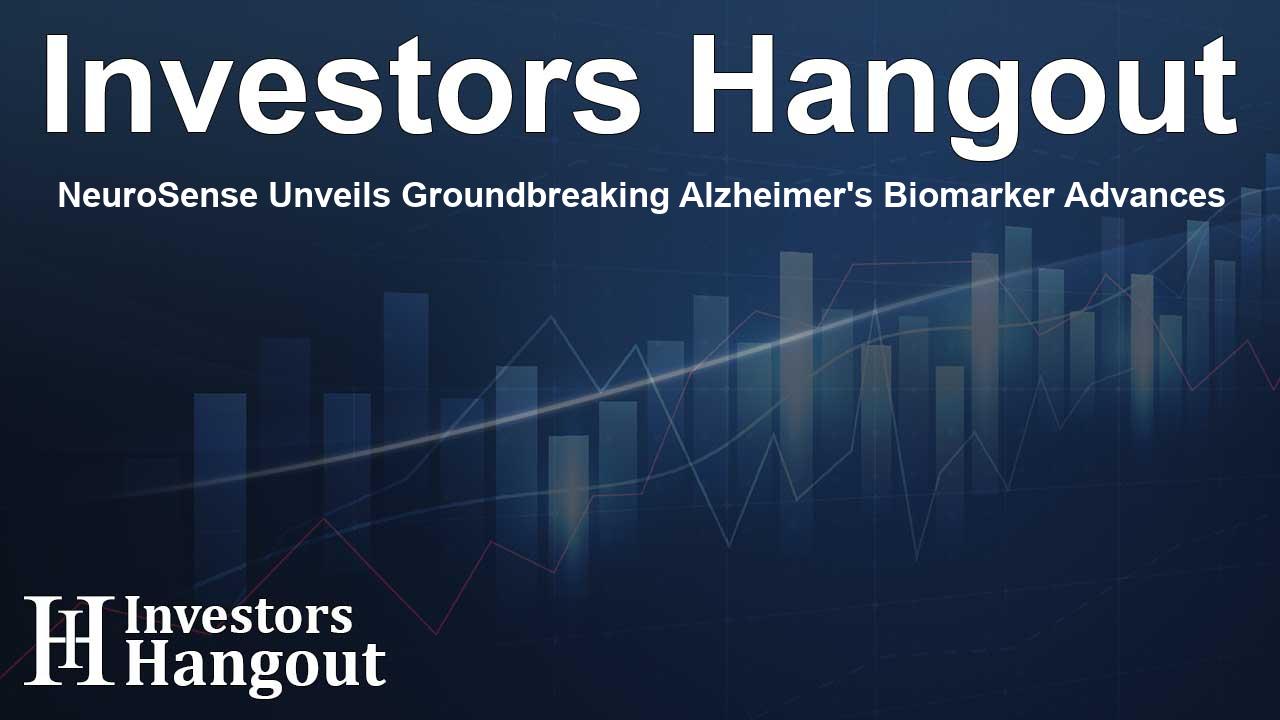NeuroSense Unveils Groundbreaking Alzheimer's Biomarker Advances

NeuroSense Reports Major Advances in Alzheimer's Biomarkers
NeuroSense Therapeutics Ltd. (NASDAQ: NRSN), a cutting-edge biotechnology company, has recently shared promising results from its Phase-2b PARADIGM study. In an exciting announcement, the company highlighted a remarkable reduction in various biomarkers associated with Alzheimer's disease (AD), showcasing the efficacy of its candidate drug, PrimeC. This recent study utilized plasma samples and revealed that PrimeC achieved significant reductions in multiple microRNAs linked to the pathology of Alzheimer's disease, suggesting a potential turning point in treatment approaches.
Understanding PrimeC's Impact on Alzheimer's Disease
The results from the study indicated significant changes in several biomarkers such as miR-146a-5p (p=0.007), miR-21-5p (p=0.003), miR-let-7a-5p (p=0.028), and miR-let-7e-5p (p=0.006). These microRNAs are notable because they play critical roles in neuroinflammation and synaptic function, both of which are crucial in the cognitive decline associated with Alzheimer's disease. The treatment effect was particularly compelling as no significant changes were observed in the placebo group, underscoring the unique impact of PrimeC.
Biological Pathway Modulation and Real-World Implications
PrimeC's ability to target biological pathways central to AD reflects its potential as a disease-modifying therapy. Alon Ben-Noon, CEO of NeuroSense, emphasized that the findings provide an essential understanding of how their drug can modulate pathways involved in Alzheimer's progression. This insight is vital as the company prepares to plan future studies aimed at advancing PrimeC’s promising treatment profile and exploring its implications for treating another neurodegenerative condition, ALS.
The Growing Need for Effective Alzheimer's Treatments
Alzheimer's disease is not just a personal crisis; it represents a significant global health issue affecting millions. Approximately 30 million individuals worldwide are living with this debilitating condition. The complexities involved in treating AD are compounded by the fact that existing therapies primarily offer symptomatic relief without halting disease progression. Therefore, innovative approaches like PrimeC, which address multiple mechanisms of the disease, are essential to making meaningful advancements in care for patients and their families.
About PrimeC and Its Mechanism of Action
PrimeC stands out as NeuroSense's lead drug candidate, featuring a novel extended-release oral formulation that combines two FDA-approved medications: ciprofloxacin and celecoxib. This unique fixed-dose combination aims to synergistically target mechanisms involved in neuron deterioration, inflammation, and RNA regulation, with the goal of potentially inhibiting the progression of both ALS and Alzheimer's disease.
Insights into the PARADIGM Study
The PARADIGM trial is a noteworthy Phase 2b clinical study focusing on the effectiveness of PrimeC in ALS. With 68 participants enrolled from various countries, including Canada and Italy, the trial showcased a randomized, double-blind, placebo-controlled design to assess PrimeC's impact. During the first six months, participants were assigned to receive PrimeC or placebo, followed by an open-label extension. This rigorous design ensures that the data collected helps in understanding how PrimeC may contribute to managing symptoms sustainably.
The Vision and Mission of NeuroSense
NeuroSense Therapeutics is dedicated to transforming patient care for those impacted by neurodegenerative diseases such as Alzheimer’s, ALS, and Parkinson's. The company recognizes that these conditions pose one of the most significant unmet medical needs of our time, with limited treatment options available. Their commitment to developing combined therapies that target multiple critical pathways is aimed at enhancing therapeutic outcomes for patients struggling with these challenging diseases.
Frequently Asked Questions
What are the significant findings from the NeuroSense study?
The study found that PrimeC produced substantial reductions in multiple microRNAs linked to Alzheimer's pathology, indicating potential effectiveness as a treatment.
What does PrimeC consist of?
PrimeC is a combination of two FDA-approved medications, ciprofloxacin and celecoxib, formulated to target mechanisms involved in neurodegenerative diseases.
Why is targeting multiple mechanisms important for Alzheimer's treatments?
Targeting multiple mechanisms can help provide more comprehensive treatment, addressing the complexity of the disease and potentially improving patient outcomes.
What was the design of the PARADIGM study?
The PARADIGM study was a randomized, double-blind, placebo-controlled trial that included 68 participants across several countries to assess PrimeC’s efficacy.
What are the broader implications of PrimeC's findings?
The findings support PrimeC's potential role as a disease-modifying therapy, which is crucial for developing effective treatments for Alzheimer's and related conditions.
About The Author
Contact Hannah Lewis privately here. Or send an email with ATTN: Hannah Lewis as the subject to contact@investorshangout.com.
About Investors Hangout
Investors Hangout is a leading online stock forum for financial discussion and learning, offering a wide range of free tools and resources. It draws in traders of all levels, who exchange market knowledge, investigate trading tactics, and keep an eye on industry developments in real time. Featuring financial articles, stock message boards, quotes, charts, company profiles, and live news updates. Through cooperative learning and a wealth of informational resources, it helps users from novices creating their first portfolios to experts honing their techniques. Join Investors Hangout today: https://investorshangout.com/
The content of this article is based on factual, publicly available information and does not represent legal, financial, or investment advice. Investors Hangout does not offer financial advice, and the author is not a licensed financial advisor. Consult a qualified advisor before making any financial or investment decisions based on this article. This article should not be considered advice to purchase, sell, or hold any securities or other investments. If any of the material provided here is inaccurate, please contact us for corrections.
